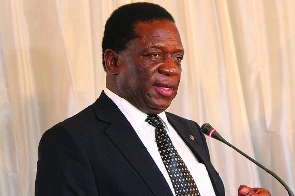The latest provisional data on Gross Domestic Product growth, released by the Ghana Statistical Service (GSS) has revealed significant changes in the structure of Ghana’s economic growth resulting from the impact of the arrival of the COVID-19 pandemic and the country’s socio-economic policy response.
Economic growth in the first quarter of 2020, which ended in March, the month in which Ghana had to begin responding to the viral threat, was driven primarily by the activities in the information and communication sub-sector of the services sector as digital channels became the overly predominant way by which economic activity and social interaction were executed.
The provisional real quarterly gross domestic product growth rate including Oil and Gas was 4.9 percent, year-on-year, in the first quarter of 2020, representing a decline of 1.8 percentage points from the growth rate recorded. for the same period of 2019.
Slower growth was mainly the result of the slow down in economic activity in March and provides a peek into the even sharper slow down anticipated for the second quarter of the year, instigated by the three week lock down of Ghana’s two biggest economic hubs in April and uncustomary low economic activity in both May and June due to the retention of restrictions nation wide.
The services sector recorded the highest growth of an unusually high 9.5 percent for the first quarter, while the agriculture sector expanded by 2.8 percent and the Industry sector by 1.5 percent,. both of which were unusually low.
In the services sector, information and communication sub-sector grew by 17.1 percent in the first quarter of 2020 compared to 14.6 percent in the fourth quarter of 2019.
Instructively, the sub-sector’s contribution to the services sector stood at 77.4 percent.
The main sub-sectors that drove GDP growth for January to March 2020 were information and communication at 42.7 percent and manufacturing’s 12.2 percent.
The sub-sectors negatively contributing to growth were construction at -10.6 percent and trade, repair of vehicles, and household goods at -8.0 percent.
Those are all sectors heavily affected by the coronavirus outbreak and the public policy response.
The services sector still remained the largest sector of the Ghanaian economy in the first quarter of 2020 with a share of 48.3 percent of GDP at basic prices.
The GDP share of Industry and Agriculture was 31.6 percent and 20.1 percent respectively.
Analysts are projecting that the information and communication sub-sector will continue to be a dominant factor in economic growth for the rest of the year, giving the digitization drive that has taken place as a result of the coronavirus pandemic. Indeed many behavourial economists think that this will be the “new normal” even if ICT’s new dominance recedes partially when COVID-19 eventually recedes.
According to the National Communications Authority (NCA), mobile data subscription increased from 24.93 million subscribers in January 2020 to 25.28 million subscribers at end of March.
This was even prior to the commencement of most restrictions and the lockdown itself.
The latest data from the GSS confirms some leading indicators of economic activity during the first quarter, released earlier.
The Bank of Ghana’s Composite Index of Economic Activity (CIEA) contracted by 2.2 percent in March 2020, compared to a growth of 5.6 percent for the corresponding period of 2019.
Preliminary estimates by the Bank of Ghana shows that growth in 2020 is likely to be between 2.0 and 2.5 percent.
Click to view details



Business News of Friday, 19 June 2020
Source: goldstreetbusiness.com

















